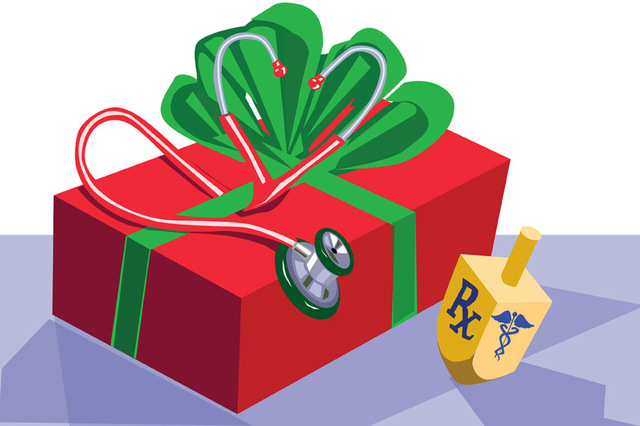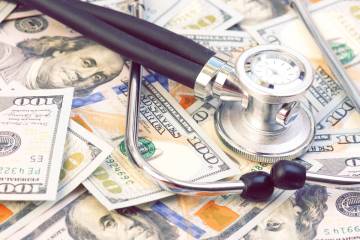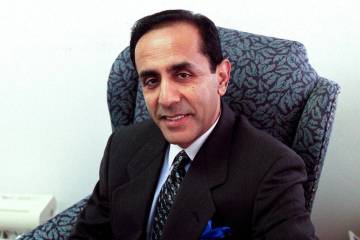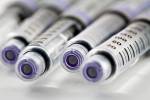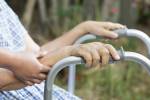Dr. Santa has gift ideas for a healthier you
With the Christmas/Hanukkah gift-giving season in full swing, many Southern Nevadans are figuring out what on earth to give family members, loved ones and business clients.
Your doctors and other health professionals probably aren’t among them. Sorry. But, really, a doctor giving each patient a gift would be a bit much, wouldn’t it?
But that doesn’t mean doctors couldn’t be killer Santas if they wanted to. So, we asked several valley health professionals what, hypothetically speaking, they’d like to give to their patients to help them have a healthier 2015.
It turns out some of their gifts are affordable, and a few are less so. But all offer hints about how we all might have a healthier new year.
KEEPING TRACK
Dr. Mitchell Forman, dean of Touro University Nevada College of Osteopathic Medicine, suggests a surprisingly simple gift: A notebook that patients could use as a “medication journal,” jotting down the drugs they take, the dosages of each drug and directions for each drug’s use, and any medication allergies the patients may have.
Patients often have no clue what they’re taking or why they’re taking it. So the journal, Forman says, can be a valuable resource for patients’ medical providers, and a means of encouraging patients to take greater responsibility for their own health.
Then, adds Forman, “if they were my favorite patients, I might give them a classical guitar CD.”
Forman — who plays classical guitar himself — notes that music is “soothing (and) medicinal, and you have to slow down to relax to listen to it.”
Thinking along the same lines, Karmella Thomas, manager of the University of Nevada School of Medicine’s Wellness and Weight Management Center, would give her patients a notebook or a smartphone app that would serve as a food diary, logging the foods they eat throughout the day.
People typically “aren’t as mindful as to what we are eating or drinking throughout the day,” says Thomas, a registered dietitian and certified diabetes educator. “And when you have to go to the next step of writing it out, it clues you in to some of the additional things (in someone’s daily diet).”
The log also can be an incentive for changing eating habits. For example, a log that reveals an absence of fruits and vegetables can be enough to spur patients to include more of both.
Generally speaking, Thomas says, we tend to underestimate how much we eat. So, she says, “daily, after every meal or snack, write it down.”
When people record their food choices, they are more apt to make better ones, she says.
“And a big part of that is … they know they’re going to look at it and show it to somebody.”
Thomas adds that existing smartphone or tablet apps — the “Notes” app on an iPhone, for instance — can be used for the same purpose.
“All doctors want their patients to be healthy,” says Dr. Sam Bauzon, a family practice physician with Southwest Medical Associates., “but we also want patients to do something they enjoy, something that they can own.”
So, Bauzon’s choice for a patient gift would be something to motivate them to do something every day, even if they don’t see him or another doctor. Something like an activity tracker.
Activity trackers help to track a person’s exercise, can measure distance walked and calories burned in a particular day, and even maintain daily, weekly and monthly records of it all.
They can be complicated — “I can’t wait to get my hands on my next Apple watch,” Bauzon says — or simple. But, Bauzon adds, the idea is that an electronic device can make record keeping simple and provide an incentive to not give up.
“And, finally, I think a big piece of this is you don’t have to do this alone,” Bauzon adds. “You could share information with friends and family, almost like a support group-type of thing.”
The device would remind patients that they need to be active throughout the day and encourage them to feel ownership of their own health, he says.
“And I do think we need to make sure our patients don’t rely on their doctor to tell them what to do (but) do it themselves,” he says. “That’s more powerful.”
GETTING EXERCISE
Dr. David Park, assistant dean of graduate medical education at Touro University Nevada College of Osteopathic Medicine, would give his patients a foam exercise mat.
It’d cost only about $25, he says, and it’d serve as a good reminder for patients to undertake regular physical activity as a means of staying healthy, losing or maintaining proper weight and, even, enjoying the de-stressing benefits exercise can bring.
“Everyone can benefit from more exercise, and I think the hardest part of exercising is just starting it,” he says. So, for those who can’t afford a gym membership or equipment for a home gym, an exercise mat is perfect.
He’d then encourage patients to use the mat for some simple exercises. Men, for instance, could begin with 10 pushups every other day, then slowly work up, maybe to two sets of 10.
Women, too, might begin with some simple exercises and stretches, which, he says, can be particularly beneficial for people who have chronic back pain or arthritis.
A mat in the living room or bedroom also serves as a constant reminder to stay active, Park says.
TAKING TIME TO RELAX
Dr. Michael Becker, a radiation oncologist with Nevada Cancer Specialists, served in Hawaii with the military before moving to Southern Nevada. He still returns to Hawaii several times a year, and says that if he could, he’d offer patients a vacation there.
Patients with cancer can go through a long course of radiation therapy, he says; many come in every day to get radiation treatment.
The physical and mental toll of that can be heavy. So, he says, “if I could, I’d love to be able to send my patients on a trip to Hawaii.”
Patients generally can’t afford it or can’t find the time to do it.
“A lot of them, after getting through a course of treatment, so many of them have to go back to work,” Becker says. “So I think it’d be a nice vacation. Some time off to rest and relax would be so beneficial for a lot of these men and women going through treatment.
“I think there’s been a lot of research that has shown that the ability to have a positive attitude can really make a big difference in terms of how well you go with your treatment.
“And if we could give patients a chance to take some time off and go on a vacation, it would probably benefit (them) more than people might realize.”
Contact reporter John Przybys at jprzybys@reviewjournal.com or 702-383-0280.



